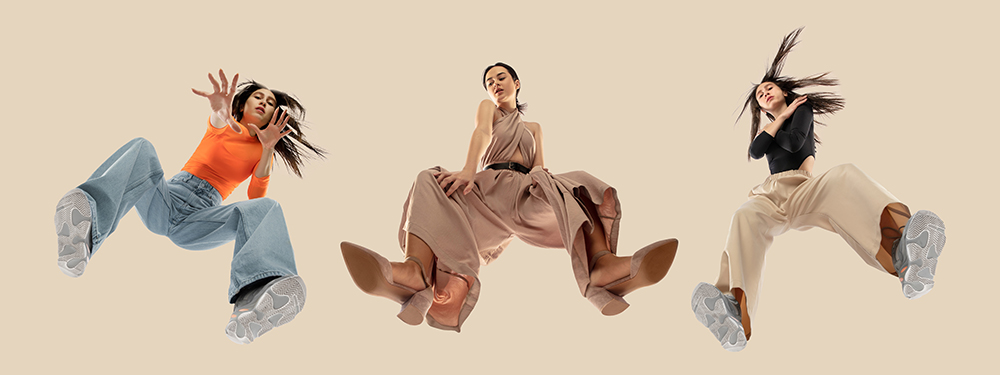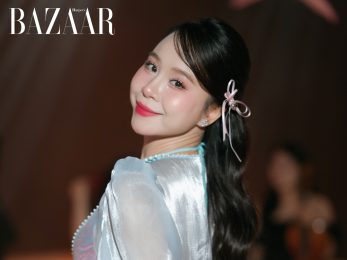
Editorial Style Photography Harnessing AI. Photo: AdobeStock.
High fashion editorial photography looks to keep its finger on the pulse of creative innovation. Pushing boundaries, showing unique perspectives, this art form looks to shift the way a viewer sees the world, in a world always evolving and changing.
One shift in our dynamic world that’s hard to miss, with debates permeating all corners of the internet, is the trickling of AI into every industry and domain of life. In short, its introduction into the creative world has not been without controversy.
It would however, be remiss, to paint this with broad brush-strokes—good, bad, a breakthrough, banal. If anything can be law in the high fashion world, it’s that this industry thrives on controversy. The cutting edge, the ugly, and the uncomfortable can have a home here too—as long as people are talking about it.
What Makes Photography Editorial?
So what really is the world of editorial photography? As it exists now, editorial photography has certainly found a home between the worlds of glossy pages and striking high fashion, on the runway and in magazines.
And so indeed, in many people’s minds, editorial photography is just that: high fashion photography, ending up as an unattainable, almost alien-like beauty, spread across the pages of fashion magazines.
A deeper dive into this artform reveals editorial style photography to be a certain art form, accessible to lay people, artists, and fashionistas alike. Story-telling and meaning-making lie at the core of this work. Rather than simply capturing a face, an event, or a building, the key lies in creating a story to strike minds and move hearts.
This photography, therefore, carefully considers cultural understanding and societal schemas when putting together textures, colors, forms, and objects. There’s a distinctly cinematic, perhaps slightly surrealistic edge to photographs created in this style, designed to resonate with unconscious structures of the mind.
The Old School
Much of classical editorial photography, as seen in high-end fashion magazines, is created by a massive team. In distinct contrast to the bottom-up, spontaneous, and free photography of many events, editorial shots call for strict structure and design, a contrived process that assists in creating an otherworldly tone.
Members of such teams involve financiers, directors, set makers, prop makers, clothing designers, make-up artists, hairdressers, accessories/wardrobe procurement, models, photographers, journalists, design editors, writers, and more. Much like in the production of a movie, time, effort, and money mark this whole process.
Editorial photography is often imitated by students and interested hobbyist photographers. This has also extended to instagram influencers. Though budgets may be low, the brains of the project consider hair, makeup, colors, and traveling to specific areas as ready made sets when creating editorial art.
Merging of the Digital and Physical
Much art created today uses digital tools. Technology may also be helping the art world protect itself, preserving art across time and in physical and trade domains.
From music mixing software and synth sounds to digital painting and wall projection art pieces, the technology has found its footing and acceptance as a valid and valued part of the art world.
Some of this art is entirely occupied in a digital space, other forms combine the real and the altered. Editorial photography is often highly edited in digital programs after the shoot, where editors adjust lighting, smooth skin, and crop shots to enhance the story being told.
In short, after the very real and grounded physicality of the shoot process, the end products of editorial photography shift to a digital state, and this is widely accepted. The idea of an AI editorial shoot without any such physicality at all, in contrast, has received much backlash among the public and creatives alike.
But this resistance can be shifted with a change in mindset and a look at these tools for what they offer.
AI Assets: Editorial Photography Reimagined
What does it look like to create editorial photography without a team? AI has advanced to the extent that entire images can be generated using a series of iterative verbal prompts. And this has been explored with editorial imaging too.
How can we imagine a world where this is ethical and supported?
Calling All Directors
For one, with such tools, any professional in the editorial photography world can have the role of creative director. Typically, one is limited to working in a restricted role within a massive machine. And the role of the creative director, especially in fashion, is usually exclusive, with money, connections, and gate-keeping playing a large role.
Using AI, anyone can be a director, or even take on many other roles, by altering hair, makeup, poses, set design, and more within one generated image. This allows any creative the possibility to instantiate their unique creative vision into a shareable piece of art.
Thus AI may be offering a way for many more artists to have their daring visions brought to life, enriching the creative spaces with pieces that captivate us and bring more variety and flavor.
Calling All Hobbyists
AI editorial photography tools can open the doors for creative expression even among non-professionals, students, or hopefuls. Much like how anyone can pick up some crayons or yarn and construct an arts-and-crafts creation, editorial photography can become a form of artistic expression that more ordinary people can enjoy.
Thus AI may offer a way to make editorial photography a more accessible and inclusive art form.
Calling All Planners and Environmentalists
There are also AI applications for people dedicated to physicality in the field—those still dedicated to creating physical products and physical photoshoots—but are open to integrating AI along the way.
For this purpose, AI-generated images can be used for wire-framing, brainstorming, and planning. Often new ideas come by incorporating an old idea, spawning new inspiration.
Also, in a win for the environment, AI generated editorial work provides a way for fashion designers to try out many iterations while reducing or eliminating the need to use resources; undoubtedly many sets, props, model outfits, and makeup options are created that are never used in the final shots.
In this way, there’s much to be excited about in the adjoining of editorial photography and AI.
Harper’s Bazaar Vietnam




